The NVIDIA SHIELD Tablet Review
by Joshua Ho on July 29, 2014 9:00 AM ESTGPU Benchmarks
On the GPU side, the Tegra K1's GPU is derived from the same Kepler GPU architecture we've seen in notebooks and desktops - albeit in a single SMX configuration. There are some power focused changes to mobile Kepler, and I’d reference our initial article on Tegra K1’s architecture for those interested in learning more. In this device, the GPU can run anywhere between 72 MHz to 852 MHz.
I included Surface Pro in a couple of the tests below just to show how far NVIDIA's Shield Tablet and Tegra K1 get in terms of pushing the envelope in gaming performance. Tegra K1 can deliver better GPU performance than the original Surface Pro, and given its price and thermal constraints isn't too far off of the newer Surface Pro tablets as well.
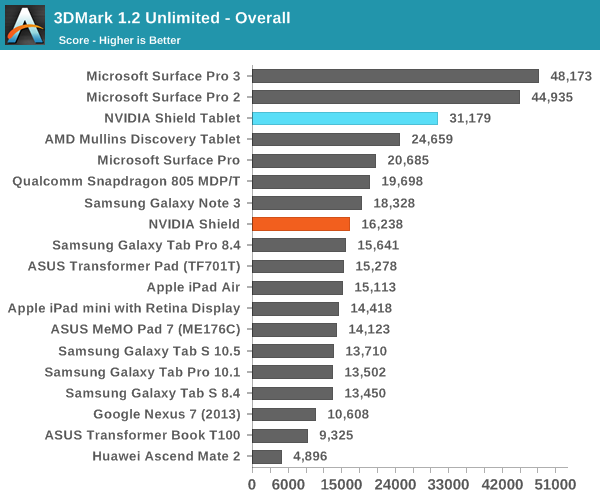
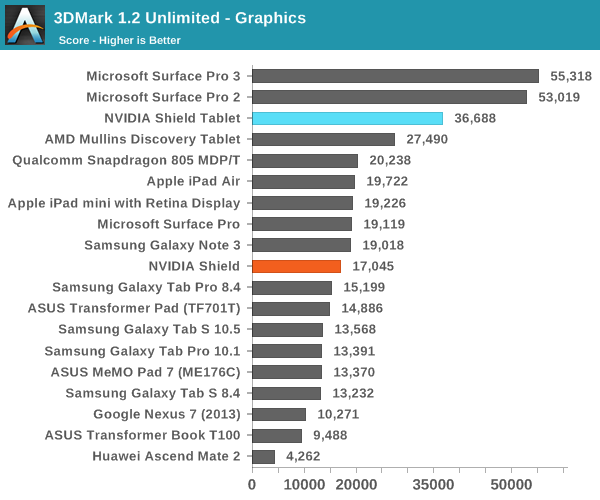

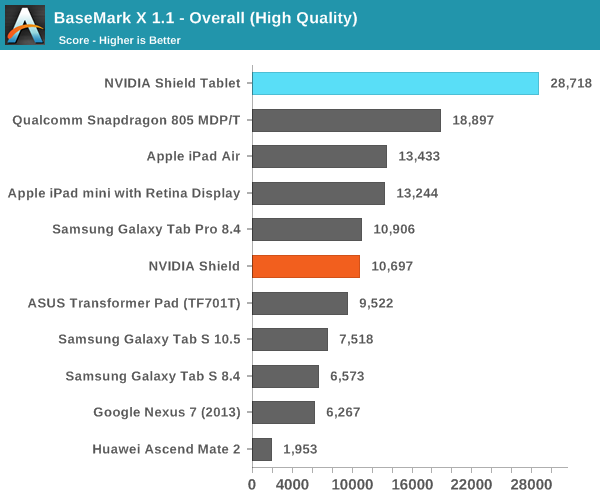
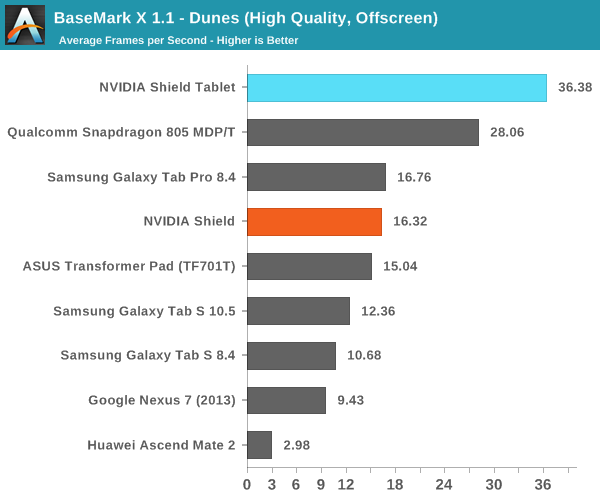
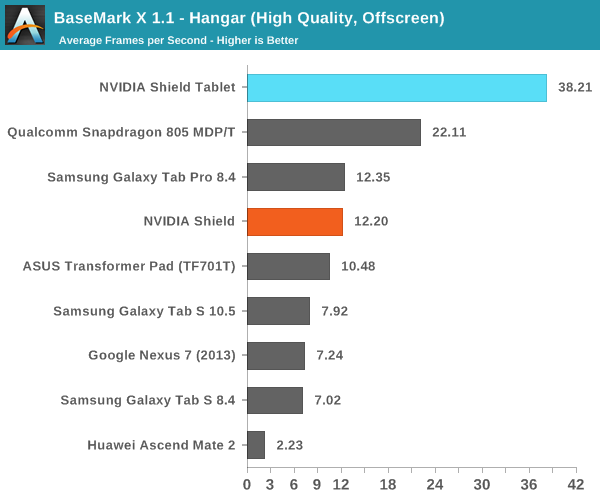
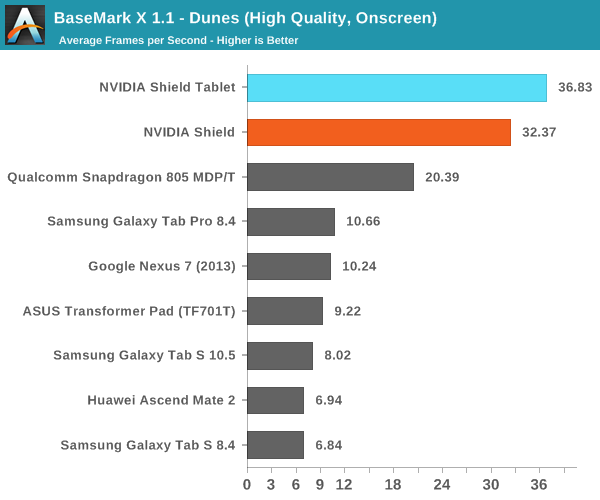
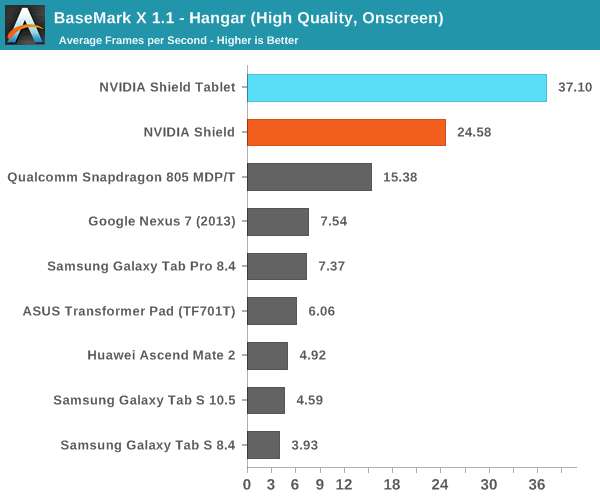
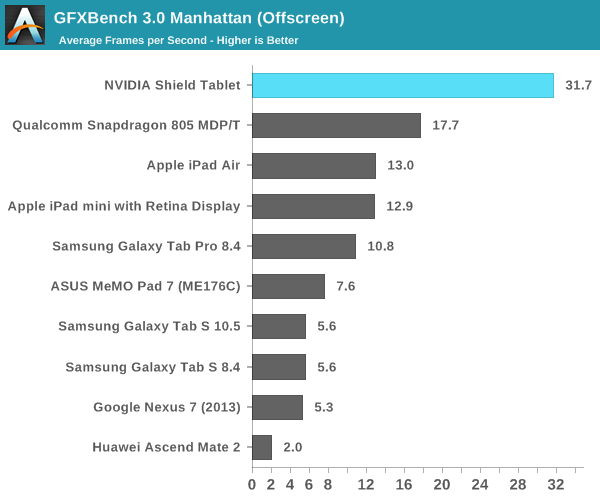
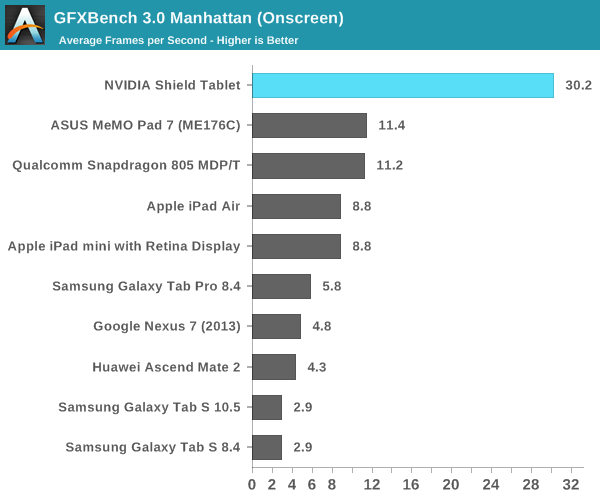
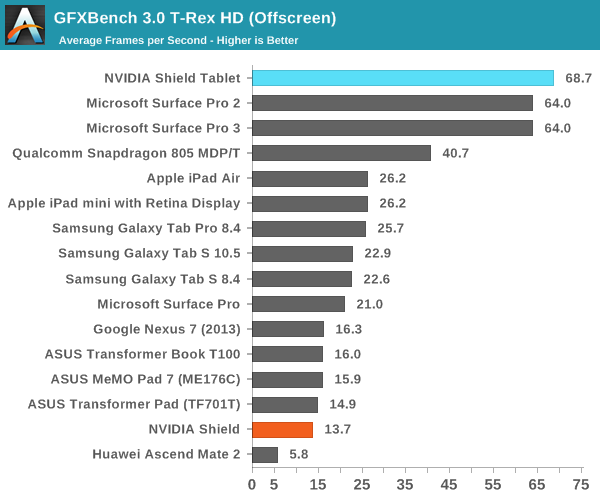
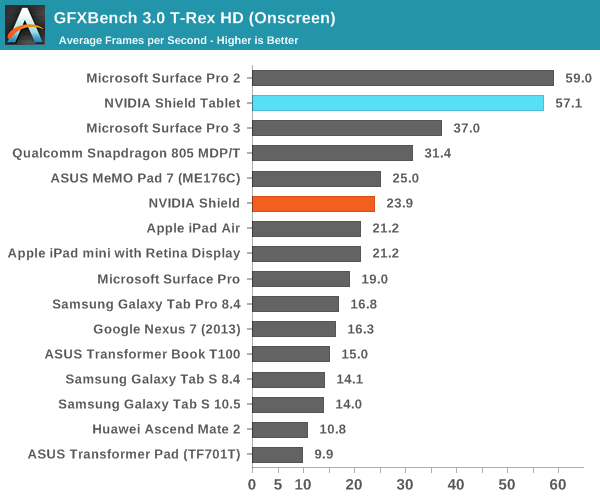
When it comes to GPU performance, there’s really no question: the Tegra K1 is easily the fastest in all of our GPU benchmarks. It handily beats every other ARM SoC, including the newest generation of SoCs such as the recently introduced Snapdragon 805 and its Adreno 420 GPU. It's worth noting that the Snapdragon 805 is likely aimed more at smartphones than tablets, although we are looking at its performance in Qualcomm's tablet development platform here. Until we get a look at Snapdragon 805 power consumption we can't really draw any perf/watt conclusions here. Ultimately, the only thing that can top the Shield Tablet is Surface Pro line, which uses more powerful laptop-class hardware.










174 Comments
View All Comments
name99 - Tuesday, July 29, 2014 - link
OK. I guess there are situations where that makes sense. Thx.6cef - Tuesday, July 29, 2014 - link
if "closer to 6504k is better", then you should order the graph by the absolute magnitude of the difference between each devices white point and that ideal value.duh.
kyuu - Wednesday, July 30, 2014 - link
+1kae - Wednesday, July 30, 2014 - link
I'll echo the question of a few previous comments... What is the compatibility of the controller with other Android Devices and PC's supporting WiFi Direct? I'm still rocking the Xbox360 Wireless, but if I can ditch the stupid USB dongle and go direct, I'd do it in a heartbeat. Double the function if it also communicates with my N5, and I'm sold.Anyone know? The documentation only talks about how fast WiFi direct is, but not if NVidia is using some proprietary drivers, or if it will work with any device. My hope is the latter.
wintermute000 - Wednesday, July 30, 2014 - link
it always beats me why the big two don't write decent cross platform drivers. Why on earth did Sony not write a good windows and/or android driver for dualshock for example. Easy money (how much can it possibly cost to write a joypad driver) to instantly create a new market.TheJian - Wednesday, July 30, 2014 - link
proprietary, but nvidia is working with google to get it into AndroidL, so should start to work elsewhere soon, if not at least everything shield that comes along and K1 devices etc. A sale is a sale and you're not giving up a lot here, but mapping software (& community profile uploads for mapping to certain games) goes with it so maybe it would be giving away too much.victorson - Wednesday, July 30, 2014 - link
"Although there are some compelling reasons to go with smaller color gamut." Could someone please help out and say what could those reasons be? I'm really curious, always thought there were no such reasons.UpSpin - Wednesday, July 30, 2014 - link
Take a look at the color gamut of white LEDs. You'll see they're blue ones with a phosphor film to produce 'white' light:http://en.wikipedia.org/wiki/Light-emitting_diode#...
However the color reproduction is lacking, especially on cheap white LEDs (the ones you can buy on eBay for example) The more accurate colors you want (high CRI) the more difficult it becomes, they become more expensive and also less efficient. To reproduce all visible colors the best method is to use three separate LEDs, a blue, green and red one. Such a setup is highly inefficient however.
So all NVidia did was using cheap white LEDs to cut costs but also to enhance battery life at the cost of a poor CRI.
theNiZer - Wednesday, July 30, 2014 - link
Great review, very helpfull !cashnmillions - Wednesday, July 30, 2014 - link
Ok so the display isn't phenomenal. Like anyone can really tell the difference between a few pixels. It's an 8" tablet, it doesn't need resolution above 720p to look good. The GPU capabilities are phenomenal, I remember when the Snapdragon and Adreno destroyed the competition about a year ago, this destroys that. I think it's an awesome piece of hardware, I plan to get one, just kind of sucks that the controller is $60. I wonder if I can use an XBOX 360 controller with it like I can on my Nexus 7.